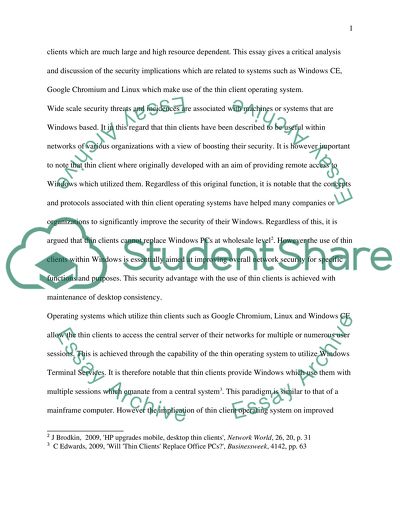Cite this document
(“Thin Client Operating System Security Essay Example | Topics and Well Written Essays - 2000 words”, n.d.)
Thin Client Operating System Security Essay Example | Topics and Well Written Essays - 2000 words. Retrieved from https://studentshare.org/information-technology/1457791-thin-client-operating-system-security
Thin Client Operating System Security Essay Example | Topics and Well Written Essays - 2000 words. Retrieved from https://studentshare.org/information-technology/1457791-thin-client-operating-system-security
(Thin Client Operating System Security Essay Example | Topics and Well Written Essays - 2000 Words)
Thin Client Operating System Security Essay Example | Topics and Well Written Essays - 2000 Words. https://studentshare.org/information-technology/1457791-thin-client-operating-system-security.
Thin Client Operating System Security Essay Example | Topics and Well Written Essays - 2000 Words. https://studentshare.org/information-technology/1457791-thin-client-operating-system-security.
“Thin Client Operating System Security Essay Example | Topics and Well Written Essays - 2000 Words”, n.d. https://studentshare.org/information-technology/1457791-thin-client-operating-system-security.


